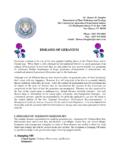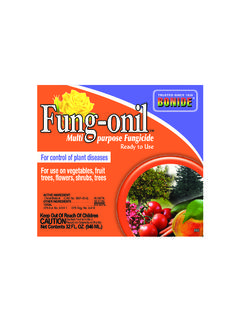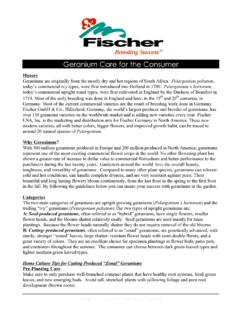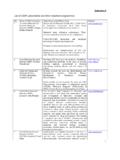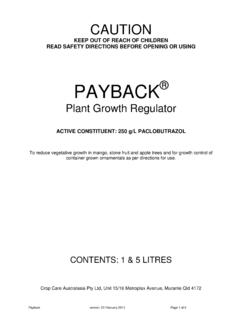Transcription of Eggplant (Solanum melongena L.): tissue culture, genetic ...
1 Acta bot. bras. 19(1): 139-148. 2005 Eggplant (Solanum melongena L.): tissue culture , genetic transformationand use as an alternative model plantClaudia Magioli1 and Elisabeth Mansur1,2 Received: March 12, 2003; Accepted: August 06, 2004 RESUMO (Berinjela (Solanum melongena L.): cultura de tecidos, transforma o gen tica e uso como planta modelo). A berinjela umaesp cie solan cea n o tuberosa de import ncia agron mica, cultivada principalmente por seus frutos. Na medicina popular, a berinjela indicada para o tratamento de v rias doen as, incluindo diabetes, artrite, asma e bronquite.
2 A berinjela suscet vel a v rias doen as epragas que causam perdas econ micas significativas. Esse problema tem sido abordado com t cnicas convencionais de melhoramento,utilizando esp cies silvestres resistentes de Solanum, que possuem uma grande diversidade gen tica e s o fontes de genes de interesseagron mico. A aplica o de metodologias in vitro berinjela tem resultado em sucesso consider vel. Os tecidos de berinjela apresentamum alto potencial morfogen tico, sendo teis para estudos de desenvolvimento e para o estabelecimento de abordagens biotecnol gicaspara a produ o de variedades melhoradas, tais como o resgate de embri es, a sele o in vitro, a hibridiza o som tica e a transforma ogen tica.
3 O conjunto dessas caracter sticas tamb m torna a berinjela um modelo completo para estudos em diferentes reas de pesquisa,incluindo o controle da express o g nica e a avalia o da estabilidade de somaclones derivados de diferentes processos morfogen trabalho, s o analisados fatores importantes que afetam a efici ncia dos processos de regenera o in vitro por meio de organog nesee embriog nese, assim como de transforma o gen tica, explorando ainda o potencial da esp cie como planta modelo para o estudo dev rios aspectos da gen tica e fisiologia : Solanum melongena L.
4 , biotecnologia, cultura de tecidos, transforma o gen tica, planta modeloABSTRACT ( Eggplant (Solanum melongena L.): tissue culture , genetic transformation and use as an alternative model plant). Eggplant is an agronomically important non-tuberous solanaceous crop grown primarily for its large oval fruit. In popular medicine, Eggplant is indicated for the treatment of several diseases, including diabetes, arthritis, asthma and bronchitis. Eggplant is susceptible toa number of diseases and pests capable of causing serious crop losses. This problem has been addressed by hybridizing Eggplant withwild resistant Solanum species, which present a wide genetic diversity and are source of useful agronomic traits.
5 The application of invitro methodologies to Eggplant has resulted in considerable success. Eggplant tissues present a high morphogenetic potential that isuseful for developmental studies as well as for establishing biotechnological approaches to produce improved varieties, such as embryorescue, in vitro selection, somatic hybridization and genetic transformation . Taken together, these characteristics also make Eggplant acomplete model for studies on different areas of plant science, including control of gene expression and assessment of genetic stabilityof somaclones derived from different morphogenetic processes.
6 In the present study, important factors that affect the efficiency of invitro regeneration through organogenesis and embryogenesis as well as genetic transformation are analyzed. The potential of this speciesas a model plant for studying various aspects of plant genetics and physiology is also words: Solanum melongena L., biotechnology, tissue culture , genetic transformation , model plant1 Universidade do Estado do Rio de Janeiro, Instituto de Biologia Roberto Alc ntara Gomes, Laborat rio de Micropropaga o e Transforma ode Plantas, Rua S o Francisco Xavier 524, PHLC/sala 505, Maracan , CEP 20550-013, Rio de Janeiro, RJ, Brazil2 Corresponding Author: (Solanum melongena L.)
7 ; DivisionAnthophyta; Class Dicotyledoneae; Order Solanales)is an agronomically important non-tuberoussolanaceous crop grown primarily for its large ovalfruit. Eggplant is native to India and China and wasprobably introduced to Europe by Arabic traders andthen brought to North America by early popular medicine, Eggplant is indicated for thetreatment of several diseases, including diabetes,arthritis, asthma and bronchitis. In addition, severalgroups have provided evidence that Eggplant extractshave a significant effect in reducing blood and livercholesterol rates in humans (Khan 1979; Jorge et ) and adult rats (Silva et al.
8 1999). Nasunin, amajor component of anthocyanin pigment of Eggplant ,has been shown to inhibit lipid peroxidation (Igarashiet al. 1993). More recently, free radical scavengingand iron chelating activities of nasunin weredemonstrated by electron spin resonance (Noda et ; 2000). Furthermore, anti-mutagenic activity ofpheophytin components from Eggplant fruit extractsMagioli & Mansur: Eggplant (Solanum melongena L.): tissue culture , genetic transformation and against several chemical mutagens wasdemonstrated by the Salmonella/microsome assay(Yoshikawa et al. 1996a; 1996b).
9 Eggplant is susceptible to several diseases andpests that cause serious crop losses. This problem hasbeen addressed by hybridizing Eggplant with wildresistant Solanum species, which present a widegenetic diversity and are source of useful agronomictraits. However, this approach is limited by sexualincompatibilities (Collonier et al. 2001) and difficultiesin obtaining fertile progenies (Gleddie et al. 1986). Inaddition, traditional improvement methods may behampered by the scarcity of natural resistance sourcesfor some important diseases, impairing the obtentionof resistant varieties (O Brien 1983; Melo & Costa1985; Lin & Xiao 1995).
10 For example, no naturalresistance sources are known for anthracnosis(Colletotrichum gloeosporioides), southern wilt(Ralstonia solanacearum) and the most commonfungal disease of Eggplant in Brazil, the Verticilliumwilt (Verticillium dahliae).The application of in vitro methodologies toeggplant has resulted in considerable success. Eggplanttissues present a high morphogenetic potential that isuseful for developmental studies as well as forestablishing biotechnological approaches to produceimproved varieties, such as embryo rescue, in vitroselection, somatic hybridization and genetictransformation.










